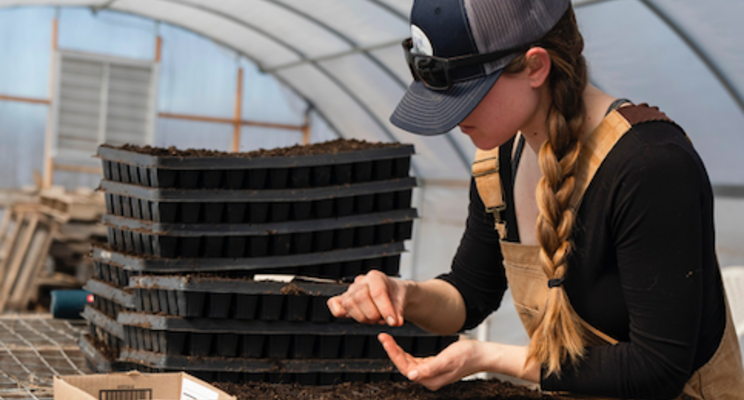The UK is to escape cheap labour using automation
Added on 12 December 2021

One piece of data behind the robotics boom is declining fertility rates, which is definitely a relevant issue for the UK. Data from the International Federation of Robotics (IFR) shows the top 20 countries for robot density in manufacturing industry in the pre-Covid normality of 2019, as led by Singapore. Robots here of course refers to machines one can mainly find in workspaces of the industrial sort, such as the grocery packing robots in Ocado warehouses. It doesn't involve any robots which are confined to labs, theme parks and company keynote product hype .
Using statistical data from the World Bank, one can see all the top 20 countries for robotics have a fertility rate below 2.1, the baseline needed to ensure a broadly stable population.
The trend doesn't show more robots in the labour force where there are lower rates of birth, which one might find a plausible notion. Singapore, for example, has a higher fertility rate (1.14) than the second-highest nation in the rankings, South Korea (0.92), with 988 robots per 10,000 employees compared to Korea's 855.
It remains clear though that birth rates are low for the twenty leaders with an average fertility rate of 1.4. A recent robotics report by GlobalData posits that robotics can help address future shortages in the workforce, which is likely to come with ageing populations. This is already a worldwide trend, and as such it's interesting to examine countries which have low birth rates but are not in the top 20 IFR list.
Where are all the British robots?
The UK is one such example, recording a fertility rate of 1.65 in 2019. And yet the country doesn't rank highly for robotics, despite sharing similar GDP, immigration and sector profiles to countries on the IFR top-20 list. In other words, Ocado remains an outlier in UK industry.
Consider Norway for example, a country also missing from the list whilst also sharing similarities with others in the chart, and which recorded an even lesser fertility rate of 1.53 in 2019. According to a study from the same year in Wiley journal New Technology Work and Employment, the absence of robots in Norway can be put down to strong workers' rights.
According to the study, Norway has "strong tripartite concertation, multi-level collective bargaining (covering 70 per cent of the workforce), a high and relatively flat wage structure, and extensive co-determination and collective voice mechanisms at the workplace.
"High labour costs may encourage economic activity to transfer into more productive sectors and workplaces in Norway…whereas the UK has a 'long tail' of low productivity companies," the study reports as a reason for low robot density in the UK, whilst acknowledging the academic advantage the country has over Norway when it comes to robotics.
"The list tells us where there is a high number of robots in industry per 10,000 human employees," says Antonio Espingardeiro, IEEE member and software and robotics expert. "However, the numbers refer only to robots and technology already installed in manufacturing settings. This does not represent research and development in robotics per country.
"I believe the UK is doing well in technologies such as machine learning with breakthrough: consider the research coming from national universities at the moment. These advancements are definitely influencing the future of robotics and indeed, industry in general."
Espingardeiro touches here on artificial intelligence (AI), another driver in the boom of robotics. Based at Salford University, the robotics expert points to medical robotics work from Imperial College London and Birmingham University as worth highlighting, along with tactile robotics research at Bristol Robotics Lab and Cambridge University's autonomous vehicle work.
"There are of course many more, but one thing is for certain, what these institutions are studying and working on will inevitably influence the future."
Away from academia and into the commercial world one can find more downbeat views on British robotics. One such is offered by Peter Schroder, chief technology officer at Karakuri, a leading food service robot maker based in London which last year had a Ł6.5 million ($8.73 million) funding round led by Ocado.
"UK-based manufacturing businesses often find it difficult to raise the capital required to invest in automation," Schroder explains. Recent ONS numbers bear this out, with the Wiley study noting investment in R&D and capital is "relatively low" in the UK at 1.7 per cent and 16.5 per cent of GDP, respectively, in 2017. In spite of its weaker labour laws, it may be that human jobs are, rather ironically, safer in the UK due to low investment preventing robot infiltration in the workplace.
"Other countries at the top of this list have very strong sustained strategic support from their governments to facilitate and fund large scale capital investments in robotics," Schroder adds.
Why Ocado is a leader in UK automation
In a possible harbinger of things to come for an aged population with a diminished labour force, recent supply chain woes in Britain have seen, among other things, empty supermarket shelves, with warnings that the troubles may last until 2023.
One brand may have got the jump on others in the grocery space, though: Ocado. The online grocery technology company is primarily a logistics business that licenses its robot technology to grocery retailers around the world, hence its heavy investments in robotic disruptors such as Karakuri.
Click here to read more.
Photo by Zoe Schaeffer on Unsplash
Source: Agretech Future
More news















